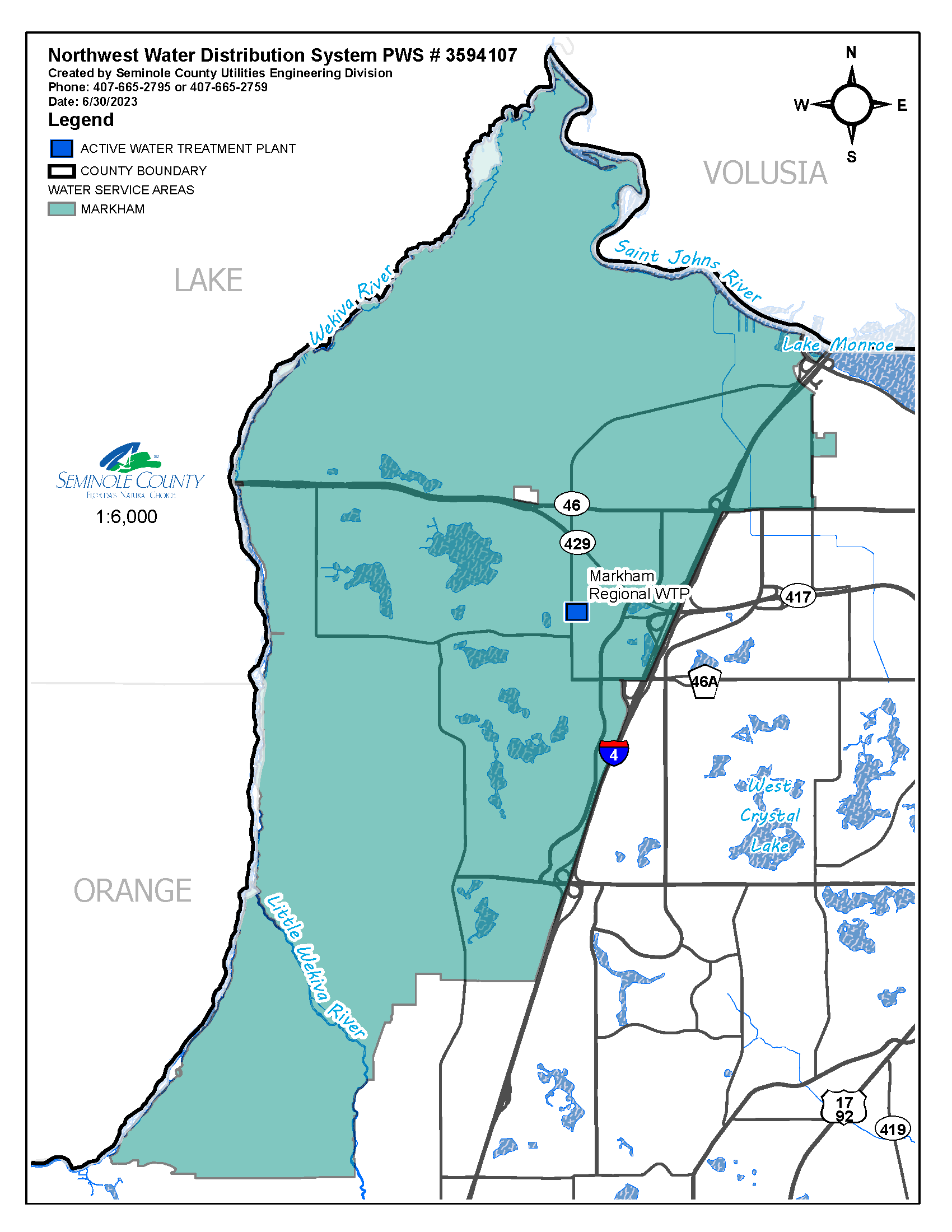Contact Information
Total Trihalomethanes (TTHM)
Total Trihalomethanes Locational Running Annual Average Exceedance in Northwest Water Distribution System PWS #3594107
Seminole County Environmental Services Department routinely monitors drinking water for contaminants, as required by the Florida Department of Environmental Protection (FDEP). Our water system exceeded a locational running annual average (LRAA) drinking water standard. Although this incident was not an emergency, as our customers, you have a right to know what happened and what we are doing to correct this situation.
In addition to testing for any bacteria in the distribution system, the water is also routinely tested quarterly, at various sites in the distribution system, for the presence of byproducts related to the disinfection process. The Environmental Protection Agency (EPA) sets standards for the maximum levels of both disinfectants and disinfection byproducts (DBPs) in drinking water. This includes substances known as trihalomethanes, collectively called total trihalomethanes or TTHMs.
The EPA Stage 2 DBP Rule, which went into effect in 2012, requires water systems to meet LRAAs for total TTHMs at each of our four sampling locations in the distribution system. The compliance limits for TTHMs are calculated by averaging the results over the last four quarters at each location. For July 2023 samples, the LRAA results show that our system exceeded the maximum contaminant level for TTHMs at one location in the area near 4965 SR 46 with an LRAA of 80.64 part per billion (ppb) after four quarters. Although the results for July 2023 and April 2023 at all locations were below the TTHM standard of 80 parts per billion (ppb), the LRAA at one location was over at 80.64 ppb.
A | B | C | D | (A+B+C+D)/4 | |
|---|---|---|---|---|---|
Monitoring Locations for TTHM | This Quarter Average | Previous Quarter Average | 2 Quarters Ago Average | 3 Quarters Ago Average | LRAA |
NW 39 – Cypress Hollow Ct. | 41.98 | 51.79 | 74.88 | 71.74 | 60.0975 |
NW 56 – Astor Farms Pl | 36.65 | 48.48 | 83.73 | 94.11 | 65.7425 |
NW 64 – Bridgewater Dr. | 52.03 | 54.67 | 44.15 | 53.32 | 51.0425 |
NW 79 – SR 46 | 60.14 | 75.21 | 87.69 | 99.52 | 80.6400 |
Please note, for information about 1,4-dioxane, please visit seminolecountyfl.gov/dioxane.
More About TTHM
- Florida Department of Health Contaminant Facts
- Seminole County Environmental Services Frequently Asked Questions
- Florida Department of Environmental Protection Emerging Contaminants Overview
Map of Area Affected

Contact Us
For more information regarding TTHM, please call Environmental Customer Service at 407-665-2110 or email TTHM@seminolecountyfl.gov.
Frequently Asked Questions
The degree of risk for health effects will depend on the TTHM level and the duration of exposure. Consumption of water with TTHM levels above the MCL for limited durations is not likely to significantly increase the risk of adverse health effects for most people. Individuals who drink water containing TTHMs in excess of the MCL over many years could experience an increased risk of cancer, liver, kidney, or central nervous system problems. The possible health effects from TTHMs are from chronic exposure.
However, the risk of not disinfecting drinking water, and exposing customers to microorganisms that can cause illness, outweighs the long-term, low-level risk of consuming TTHMs and other water disinfection byproducts.
Based on the most recent water samples, the concentration of TTHMs in Seminole County's water distribution system meets the appropriate levels. Therefore, no alternative water source is necessary, and boil water advisories are not in place. Customers with health-related concerns should consult their physician. In the event of an immediate water safety issue, customers are notified within 24 hours.
Total Trihalomethanes (TTHM) are formed as a result of disinfecting drinking water. The State of Florida requires drinking water disinfection to minimize potential bacterial contamination, such as E. coli or Salmonella, in the drinking water system. TTHMs are a group of chemicals that can form when the organic matter in water is treated with chlorine, chloramine, or other disinfectants. These treatments typically produce lower levels of regulated disinfection byproducts such as TTHMs.
We are working to minimize the formation of TTHM while ensuring we maintain an adequate level of disinfectant. County staff has modified the operational treatment process and increased system flushing providing more water turn over leading to reduced TTHMs, this will also remove accumulated sediment and prevent naturally occurring sediment buildup in the distribution system.
